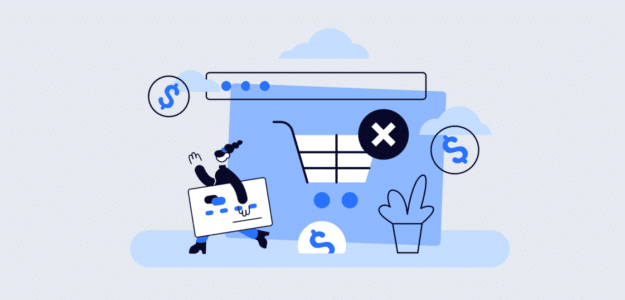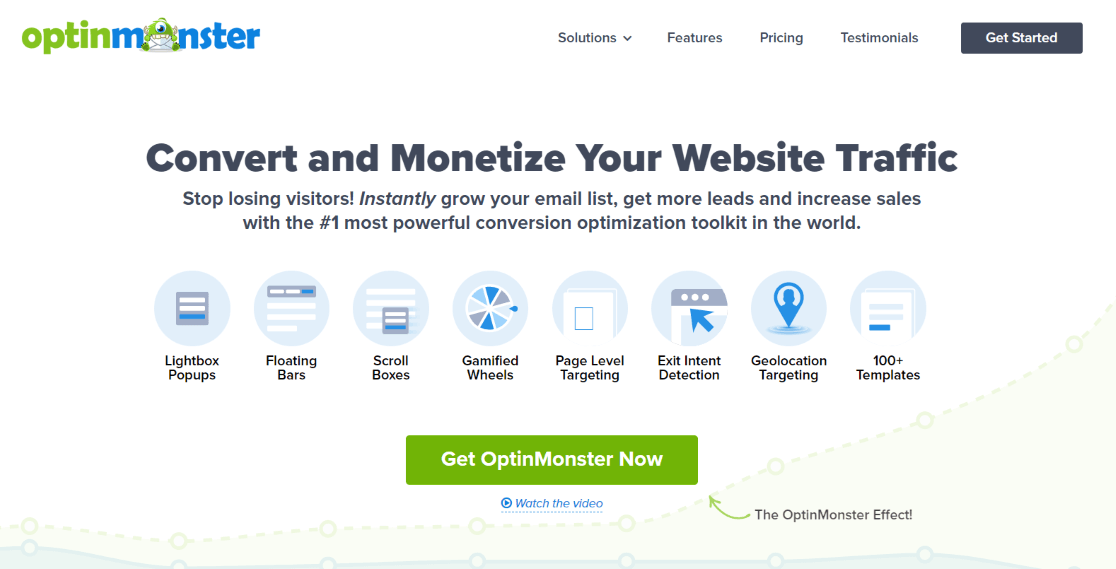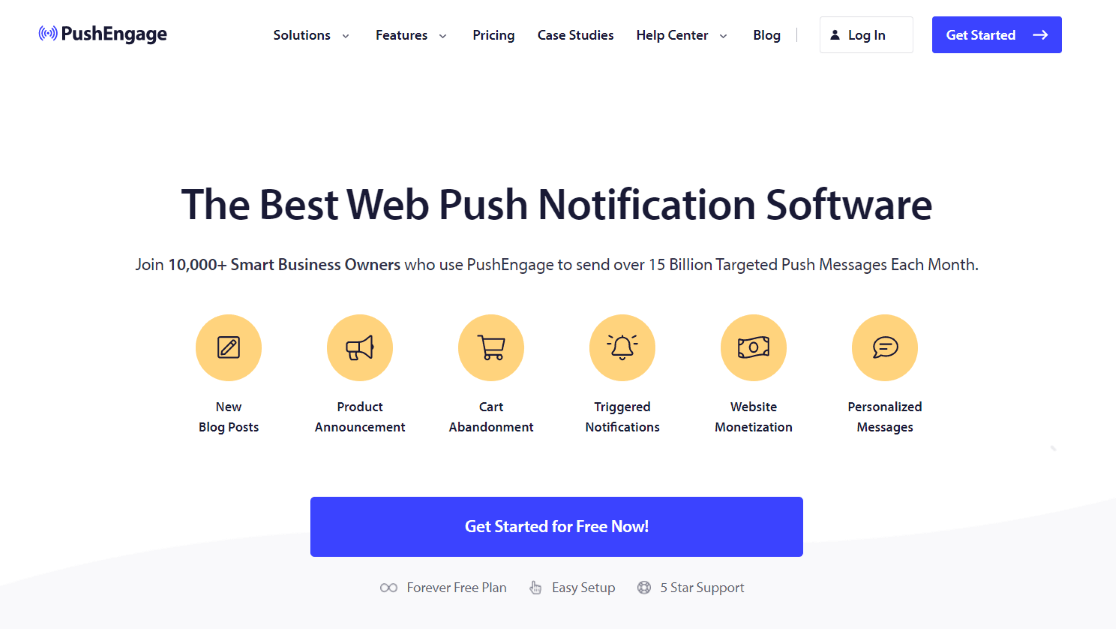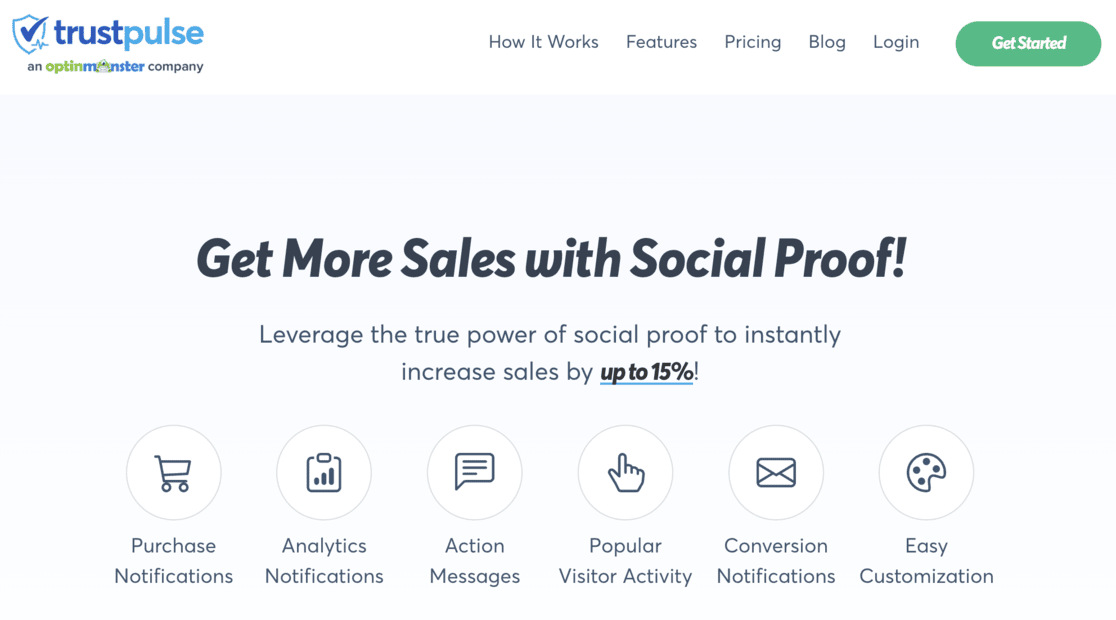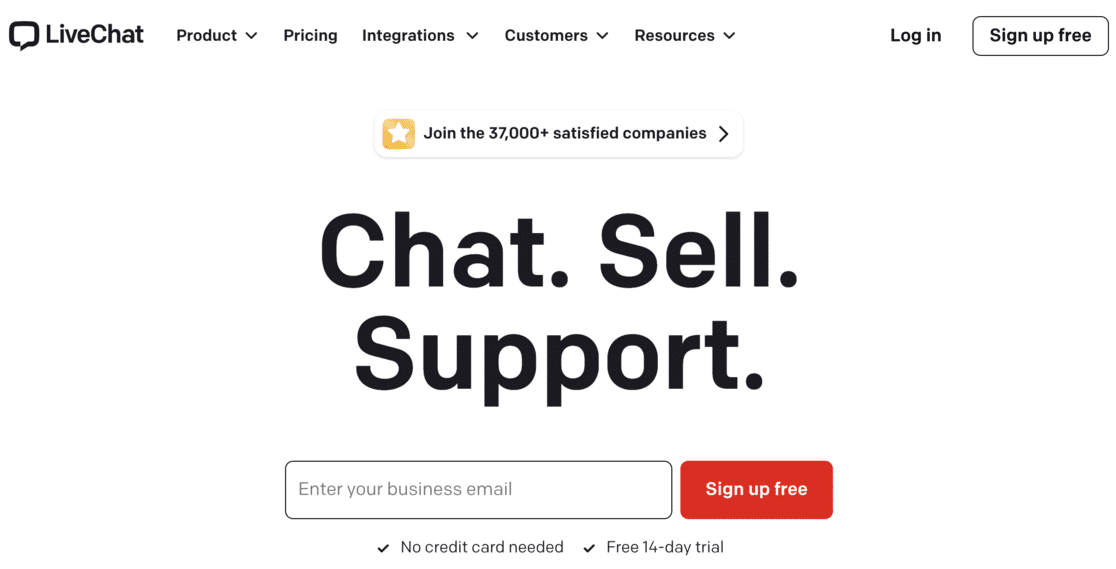Picture this: You’ve put in the hard work to attract visitors to your eCommerce store, and they’re adding items to their carts. But here’s the catch – around 70% of those potential customers leave without completing their purchase. That’s right; they’re abandoning their carts, so you need a strong abandoned cart recovery strategy.
Luckily, we’ve got some good news! We’ve covered you with fantastic strategies in this guide to help you convert abandoned carts and get your buyers to hit that ‘Complete Purchase’ button.
Here’s what we’ll cover:
- Why Do Customers Abandon Carts?
- Our Top 9 Abandoned Cart Recovery Strategies
- How to Track Abandoned Carts with ExactMetrics
- Frequently Asked Questions
Why Do Customers Abandon Carts?
Here are some common reasons for cart abandonment:
1. Unexpected shipping costs or taxes that keep customers from finalizing their purchase.
2. Window shopping – some visitors add items to their cart without a genuine intention to buy.
3. A complicated or lengthy checkout process that discourages customers from completing their purchases.
4. Trust issues arising from an outdated or suspicious-looking checkout page.
5. Distractions that pull customers away from the checkout process.
6. Technical glitches or slow site performance that frustrate potential buyers.
Now that we know what causes the problem, let’s explore what you can do to solve it.
Our Top 9 Abandoned Cart Recovery Strategies
You might be thinking, ‘What is abandoned cart recovery?’
Abandoned cart recovery is the solution to the problem of customers leaving an online shopping cart without completing their purchase. This process involves strategies to encourage these customers to return and finalize their transactions, aiming to recover lost sales.
Now, let’s get into the top abandoned cart recovery strategies:
- Implement Exit-Intent Popups
- Use Abandoned Cart Recovery Push Notifications
- Set Up Abandoned Cart Recovery Emails
- Enable Guest Checkout
- Offer Free Shipping
- Display a Clear Return Policy
- Build Trust with Security Measures
- Provide Live Chat Support
- Optimize Site Speed
1. Implement Exit-Intent Popups
Imagine you’re about to leave an online store because you’re unsure about a purchase. Suddenly, a popup appears, offering you a 20% discount on your order.
Tempting, right?
That’s the power of exit-intent popups.
We recommend using a tool like OptinMonster to create engaging exit-intent popups that capture your visitors’ attention just as they’re about to leave.
Offer a compelling incentive, and watch your conversion rates skyrocket.

2. Use Abandoned Cart Recovery Push Notifications
Push notifications are another powerful tool in your abandoned cart recovery arsenal. By sending timely, personalized messages directly to your customers’ desktop or mobile browsers, you can remind them of the items they left behind and entice them to return.
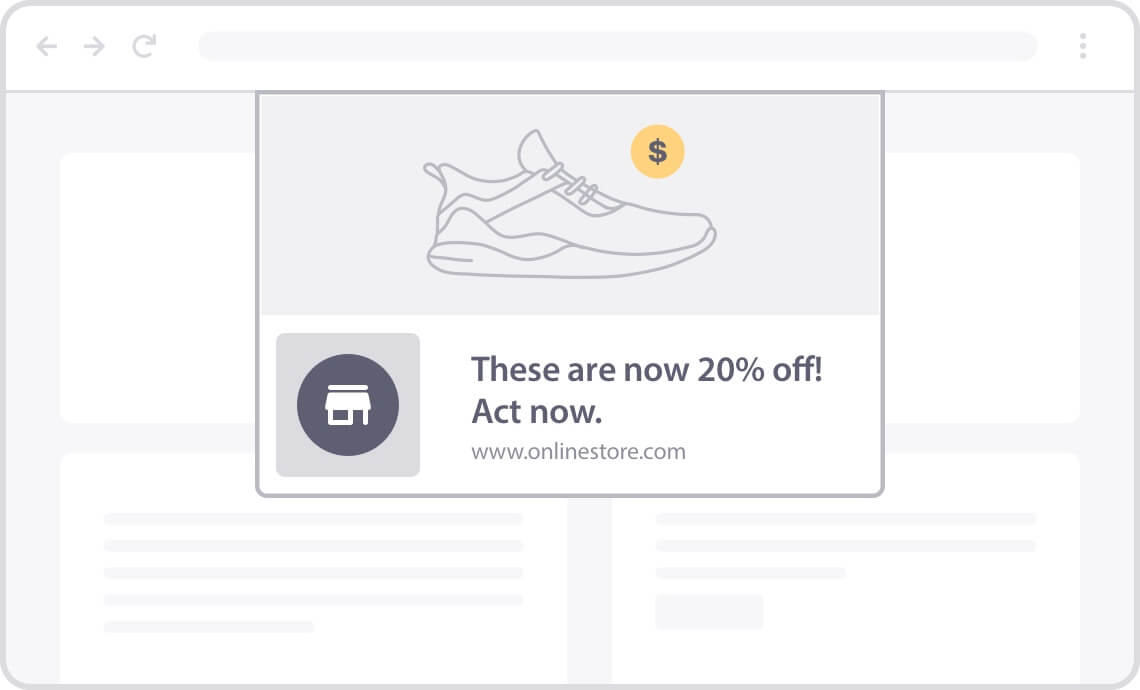
PushEngage is an excellent push notification software that allows you to create targeted campaigns and even display the specific products abandoned.
PushEngage lets you communicate critical updates and maintain engagement with your visitors. It’s ideal for distributing notifications about your latest blog entries, sales events, new product launches, and more.
To tackle cart abandonment, PushEngage allows you to send notifications directly to cart abandoners’ desktops or mobile devices, similar to emails, but you can reach them through their notification feeds rather than their often overcrowded email inboxes.
3. Set Up Abandoned Cart Recovery Emails
Emailing your customers can be an effective recovery strategy if a shopper abandons their cart. Utilizing email marketing tools such as Drip or Constant Contact allows you to set up automated abandoned cart recovery campaigns that integrate seamlessly with your eCommerce platform.
Craft attention-grabbing subject lines and consider offering discounts or free shipping incentives to encourage customers to return and complete their purchases.
Personalize your emails with details of the abandoned items and add a clear call to action to make it easy for customers to resume their shopping experience right where they left off.
This is a simple example of what that could look like:
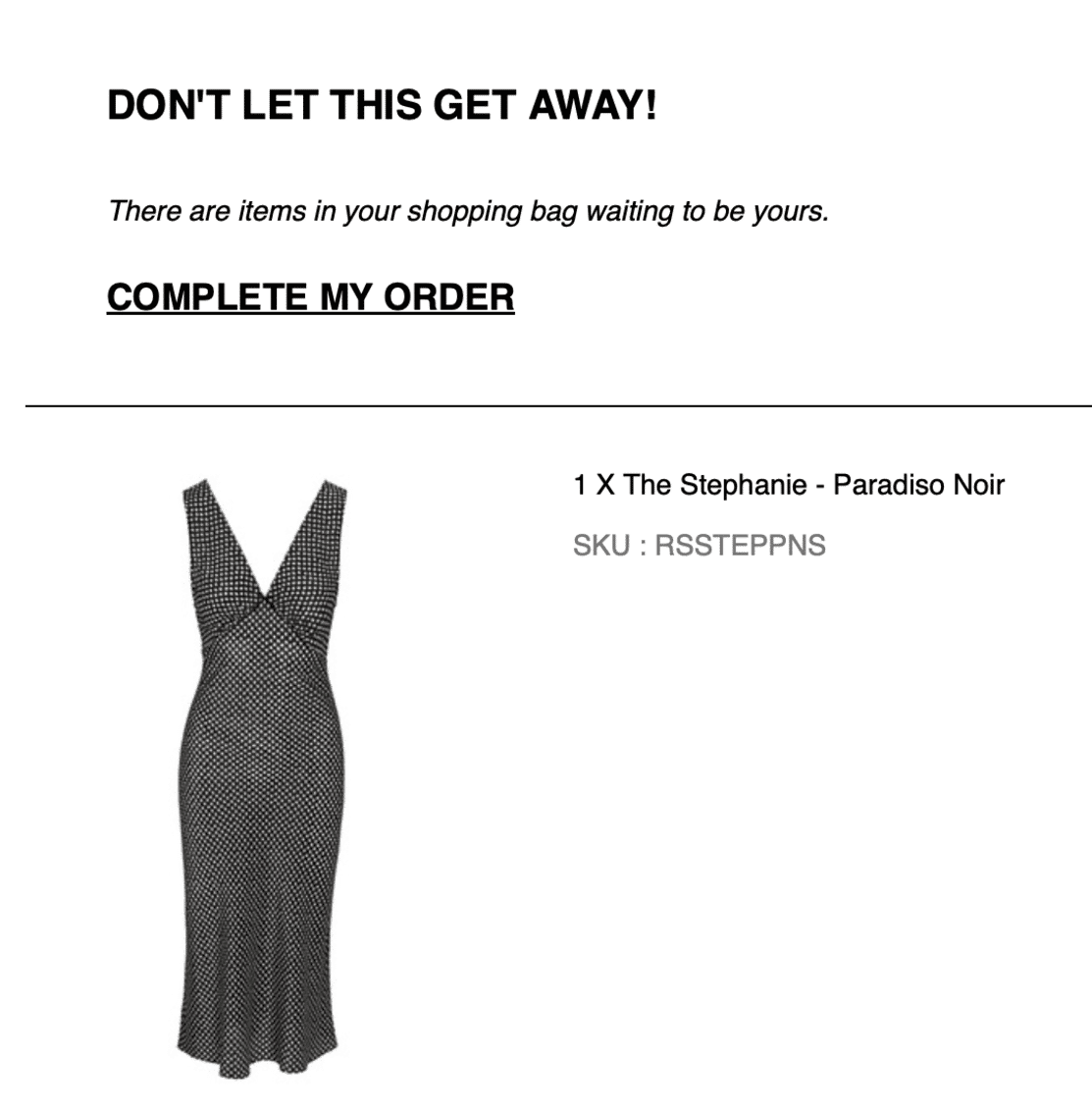
4. Enable Guest Checkout
Requiring customers to create an account can be a significant barrier to purchase. Sometimes, buyers want to make a quick purchase without the hassle of registering. Enable guest checkout to streamline the process and reduce abandonment rates.
While it’s beneficial to have customers create accounts for better data collection and personalized marketing, insisting on this can often backfire, especially if customers are in a rush or prefer not to share too much information.
To balance the need for customer information with the desire for convenience, consider asking for account creation after the purchase is complete. For example, you could offer a discount on the next purchase or exclusive access to new products as a benefit for registering an account.
You can still gather valuable customer data without disrupting the checkout flow.
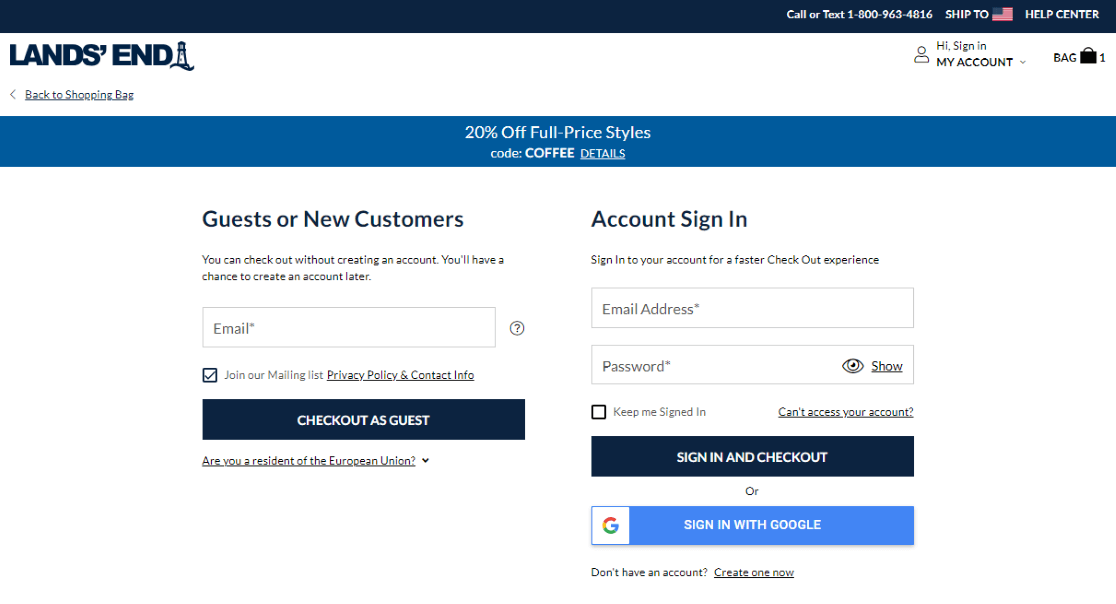
5. Offer Free Shipping
Free shipping is a major point for online shoppers. In fact, 82% of online shoppers say free shipping is a deciding factor.
That’s huge!
While offering free shipping on every order may not be feasible, consider setting a minimum order value threshold for free shipping.
Make this information clear throughout your store to avoid surprises at checkout.
Display a progress bar or a notification that shows how much more they need to add to their cart to qualify for free shipping. This can encourage additional purchases and increase the average order value.
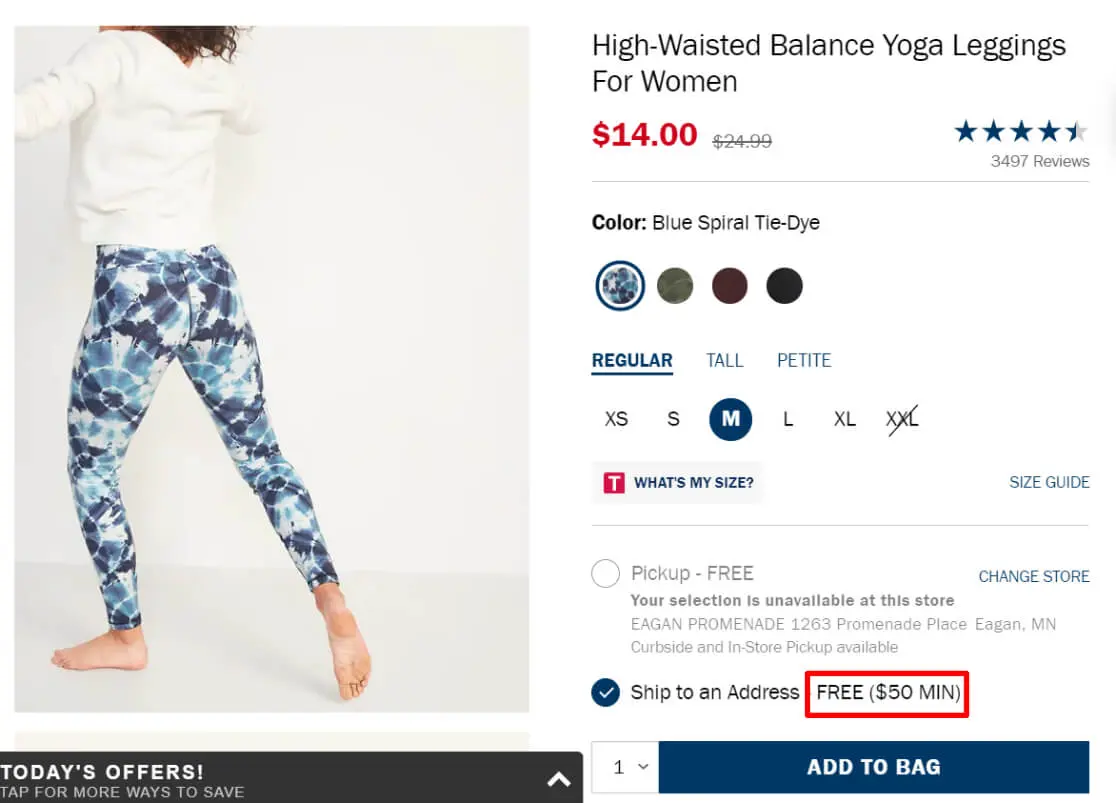
Highlighting this incentive can significantly reduce cart abandonment by eliminating one of the biggest deterrents—unexpected shipping costs.
6. Display a Clear Return Policy
A straightforward, easy-to-find return policy can go a long way in building trust with your customers. Ensure your policy is visible during checkout, and consider using a popup window to display it without navigating users away from the checkout page.
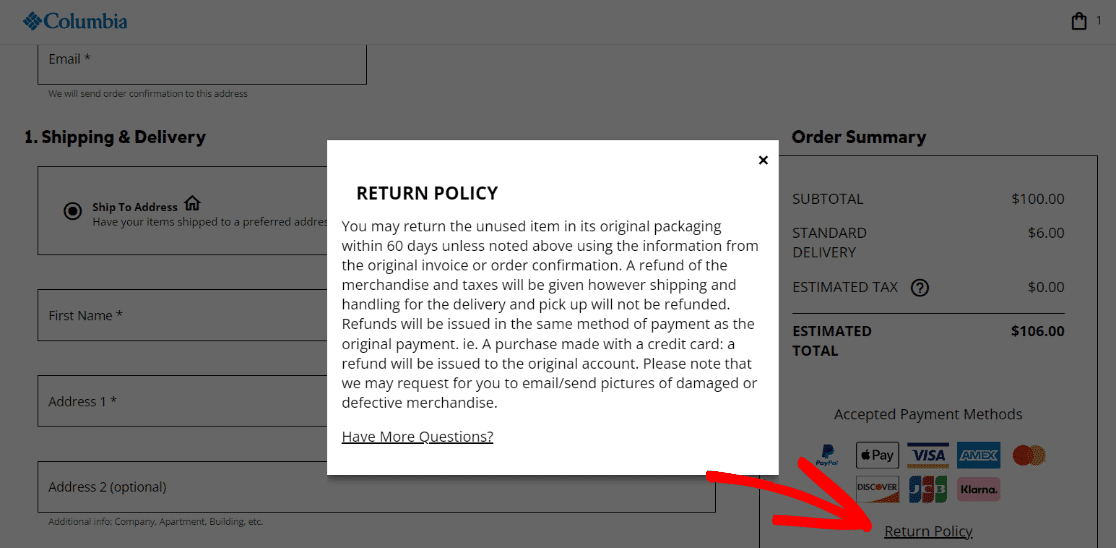
Additionally, include a summary of your return policy on product pages and the shopping cart to reinforce customers’ security and flexibility when purchasing.
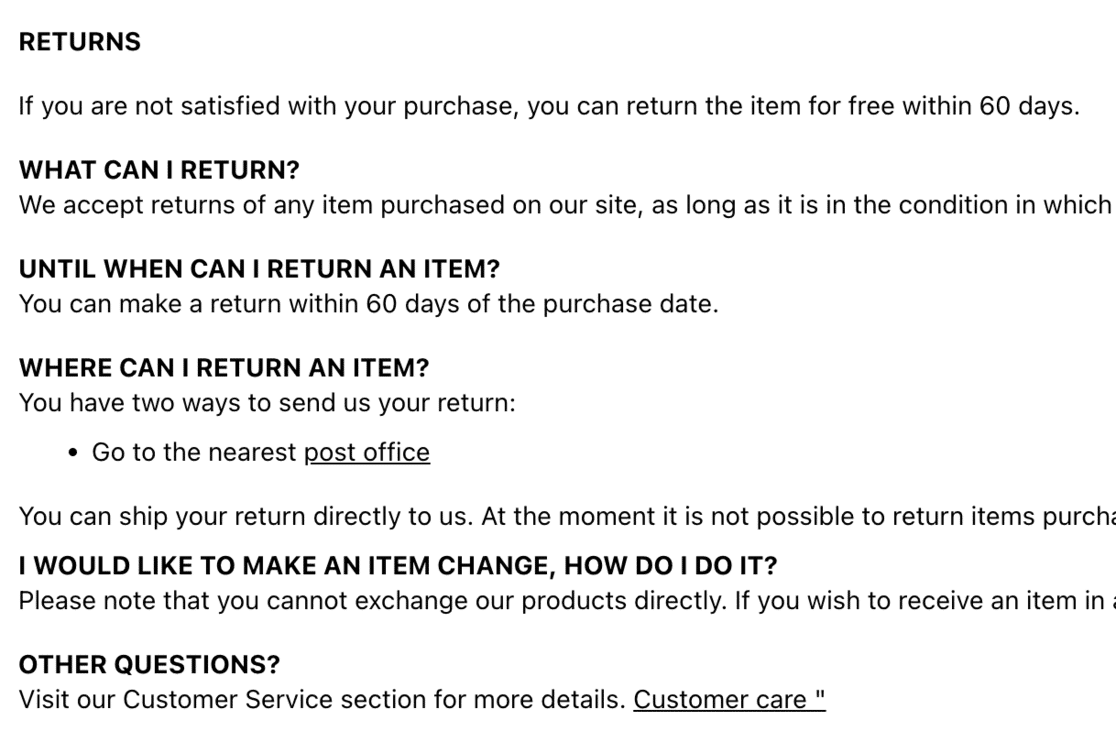
Providing clear, reassuring information about handling returns can alleviate concerns about buying the wrong item or having regrets post-purchase.
It’s also beneficial to link to a more detailed return policy that explains the process step-by-step, including any timelines, fees, or conditions, which can help reduce customers’ hesitation about purchasing.
7. Build Trust with Security Measures
Everyone wants to ensure they are not getting scammed when shopping online. Customers need to feel secure when providing their personal and financial information.
Utilize trust logos to visibly showcase your site’s security measures, reassuring customers that their data is protected. Consider implementing social proof elements such as product reviews and recent transaction popups—tools like TrustPulse are excellent for this.
Incorporating customer testimonials and ratings can further enhance credibility, showing prospective buyers that others have had positive experiences.

Additionally, display any industry certifications or badges that affirm your commitment to security and quality. Ensure these elements are prominent throughout the shopping journey, especially on the checkout page, to alleviate any last-minute doubts and foster a sense of safety and trust.
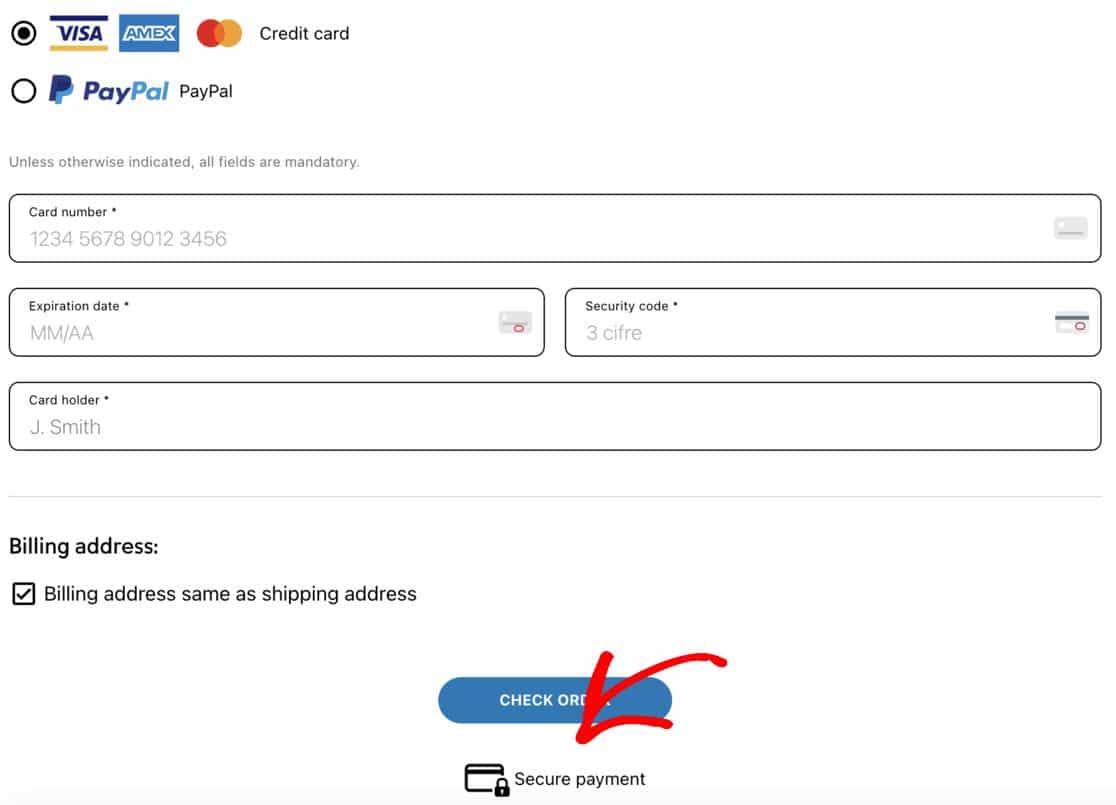
8. Provide Live Chat Support
Sometimes, customers abandon their carts because they have unanswered questions or concerns. By offering live chat support with a tool like LiveChat, you can address these issues in real time, helping customers overcome any barriers to purchase.
Live chat support is particularly effective because it provides immediate assistance, unlike email or phone support, which can require waiting periods that might discourage customers from completing their purchases.
Incorporating a chatbot can enhance this experience by being available 24/7, ensuring that help is always at hand, even outside of regular business hours. This can be especially beneficial for international customers in different time zones.
Chatbots can also handle multiple inquiries simultaneously, reducing wait times and improving overall customer satisfaction.
9. Optimize Site Speed
It’s a well-known fact that both users and Google favor fast-loading websites. If your website or checkout process lags, you risk losing revenue.
Therefore, it’s crucial to ensure a streamlined checkout process and a swift loading of your entire website.
Regularly monitor your website’s speed by conducting frequent speed tests.
For WordPress users, you can utilize ExactMetrics to assess your site speed directly within your WordPress dashboard at any time:
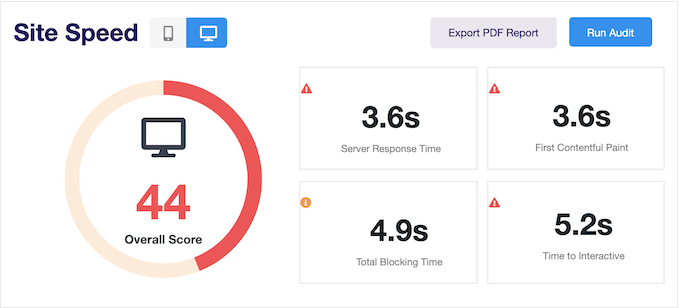
Should you encounter any slowdowns on your site or within your checkout process, addressing these issues promptly to enhance your website’s performance is essential.
How to Track Abandoned Carts with ExactMetrics
To gauge the effectiveness of your abandoned cart recovery strategies, you’ll need to track your eCommerce funnel in Google Analytics. WordPress users can easily access this data using the ExactMetrics plugin.
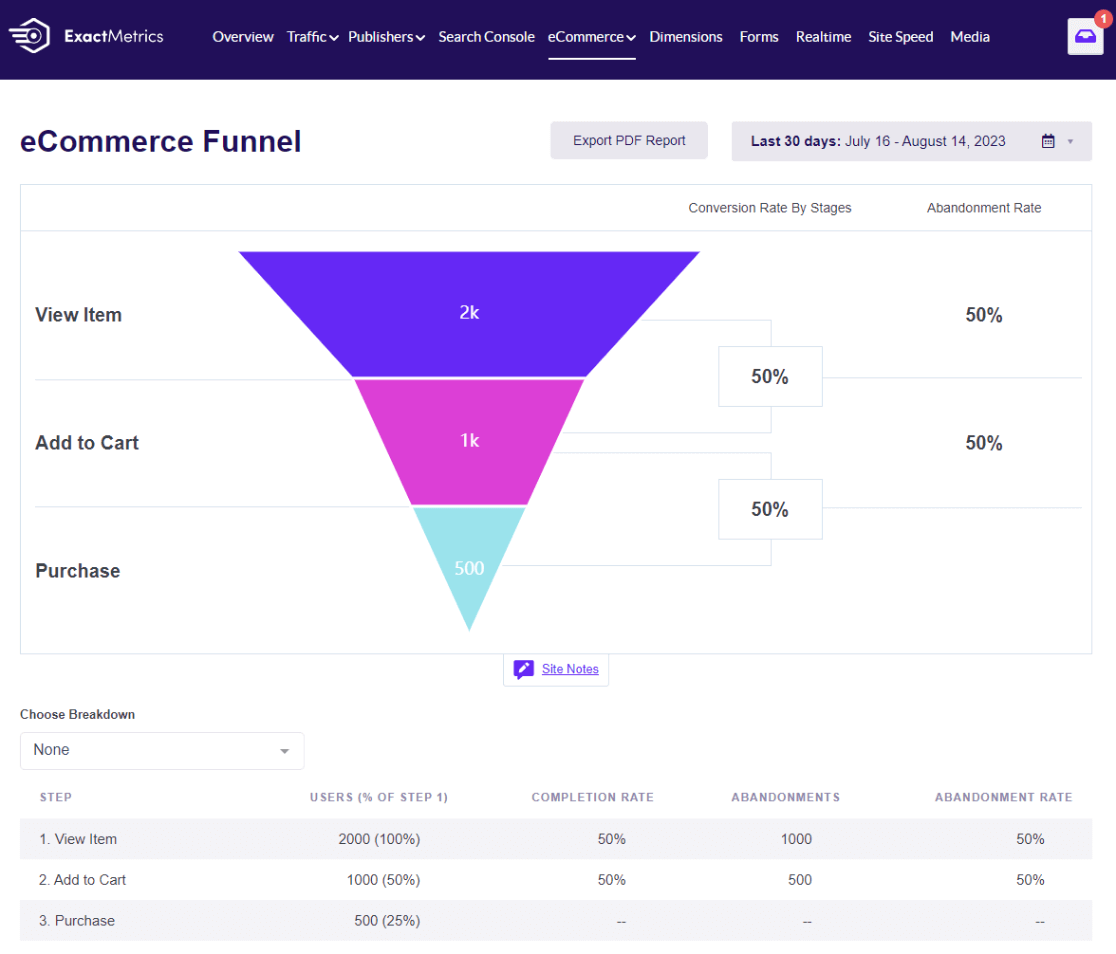
With ExactMetrics, you can view a pre-configured eCommerce funnel report directly in your WordPress dashboard. This report provides valuable insights into your store’s performance, including abandoned cart data.
If you’re not using WordPress, you can still create a custom funnel report in Google Analytics by following our GA4 Funnel Exploration Reports guide.
Frequently Asked Questions
How does abandoned cart recovery work?
Abandoned cart recovery involves identifying customers who leave items in their cart without purchasing and engaging them with targeted messages to encourage them to complete their purchase.
How do you solve abandoned carts?
To solve abandoned carts, implement strategies like sending reminder emails, offering discounts, providing multiple payment options, and ensuring a seamless checkout process to encourage customers to finalize their purchases.
What are the best tools for abandoned cart recovery?
Practical tools for abandoned cart recovery include OptinMonster, PushEngage, ExactMetrics, and TrustPulse. These platforms help automate communications, track cart abandonment rates, and engage customers effectively to complete their purchases.
Can abandoned cart recovery increase sales?
Yes, abandoned cart recovery can significantly increase sales by re-engaging customers who intend to buy, often converting them with reminders or incentives, thus maximizing revenue opportunities.
That’s it!
Abandoned carts may seem daunting, but with the right strategies, you can recover a significant portion of that lost revenue. Implement these proven techniques, track your progress, and watch your sales grow.
If you liked this article, you’d also like to read about 15 Simple Ways to Boost Your eCommerce Conversion Rate.
Are you not using ExactMetrics yet? Install it today and start unlocking valuable insights to grow your business!
For more helpful tips on eCommerce optimization and Google Analytics, follow us on X and Facebook.

